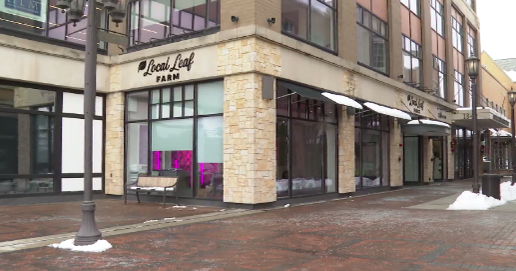Taking a look at the first African American history wax museum, located in Baltimore
BALTIMORE --- The National Great Blacks In Wax Museum is the first African American history wax museum in the nation.
It is a historical treasure right here in Baltimore.
It's a place where the stories of African Americans across the world come to life.
From Ancient Africa to slavery, the Civil Rights era and everything in between.
Today and yesterday's history are all in one place.
Recently, they've added a new exhibit, by renowned creator, artist and professor Stephen Hayes. His work connects the past and the present in an emotional display.
Hayes gave WJZ us a glimpse of his space in North Carolina while he teaches at Duke University.
"This is my —the studio and the classroom," said Hayes.
His work has made its way North to The National Great Blacks in Wax Museum in Baltimore.
"You are not only an observer, you are a participant," co-founder and president Dr. Joanne Martin told WJZ.
The museum is a place where history comes alive, all because of a dream Dr. Martin and her late husband Dr. Elmer Martin had more than 40 years ago.
"We purchased where we are here now and what is called the mansion. It was the Bower and Schmidt mansion," said Martin.
It's a part of their 10,000-square-foot facility along East North Avenue.
"And this is where our 'Cash Crop' exhibit is," Martin said.
"The 'Cash Crop' is about the transport of people from Africa to America," Hayes told WJZ.
Together, Martin and Hayes brought this story here to teach the next generation.
In the exhibit, you'll see faces from the past. Human figures, are all cast in concrete and bound in chains.
"'Cash Crop' is actually cast off from real people. So I have models that will stand there and pose for me, and then I will go and play some material on their body and then that would take all of the details and skin of their body," Hayes said as he described how he created the display.
"I cast it in three parts, which would be the face, the head, the torso, and then the legs, and it takes about 45 minutes per part, and I went back and cast cement inside of the molds."
Hayes said the creative process was symbolic.
"Basically, I was the captain of their body, and I would have to – you know —they had to listen to what I had to say, what I had, what I had to say or tell them to do. So it goes back to think about life," Hayes said "Those people didn't have any say-so of their body. They were trapped on this ship for 6 to 8 weeks, and I would ask my models afterward like —How did you feel? Could you imagine being in that position for a 6 to 8-week journey?"
"They talked about feeling powerless, hopeless, feeling stuck - trapped," said Martin.
The 15 life-sized figures symbolize the millions of Africans brought to the Americas in the Atlantic slave trade between 1540 and 1850.
"One person said it looked like coffins but for him, the idea of people on a slave ship and that is the image he is attempting to capture and that you could look through a slave ship as well," said Martin.
Hayes says his work is also meant to symbolize the truths behind slavery in the past and present.
"How did the transport of people as a business commodity have evolved to today where we just transport the goods right here," Hayes asked.
"We are talking about people of different genders, we are talking about young people," said Martin.
Hayes hopes those who see the exhibit are able to learn something new.
"I just hope people you know, not just enjoy, but use it as a way of learning, or as a way to create conversations that would never be had," said Hayes.
Because Hayes and Dr. Martin both believe this art—- its history is not meant to be forgotten but remembered for generations to come.
The 'Cash Crop' exhibit will be on display until August 2024. For ticket information visit this website.








